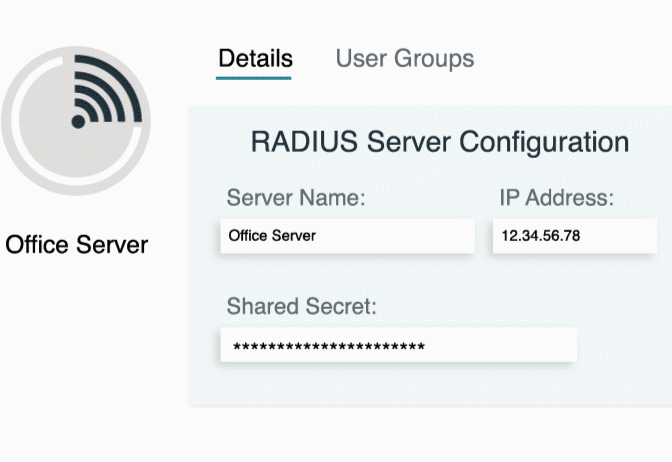Updated on March 7, 2025
User Datagram Protocol (UDP) is a transport-layer protocol designed for fast, low-latency communication. Unlike TCP, which relies on connections, UDP is connectionless and focuses on speed rather than reliability. This makes it ideal for things like streaming, online gaming, and real-time communication.
In this blog, we’ll break down the basics of UDP, how it works, its structure, and where it’s most effective.
Definition and Core Concepts
What Is UDP?
User Datagram Protocol (UDP) is a transport-layer protocol in Layer 4 of the OSI model. It’s defined in RFC 768 and allows applications to send data packets, called datagrams, directly to recipients without needing to establish a connection first. UDP prioritizes speed and efficiency over reliability.
Since UDP doesn’t handle error correction, retransmission, or acknowledgments, applications using it must manage data integrity and handle any lost packets themselves. This makes UDP faster and simpler than TCP, but also less reliable.
UDP vs. TCP: Key Differences
Connectionless vs. Connection-Oriented
UDP doesn’t establish a connection or require a handshake between the sender and receiver. TCP, however, uses a three-way handshake to set up a connection, ensuring reliable communication.
Reliability
TCP guarantees error correction with acknowledgments, retransmissions, and data sequencing. UDP, on the other hand, doesn’t ensure that packets are delivered or arrive in the correct order. Applications using UDP need to handle these features on their own if necessary.
Speed and Efficiency
UDP is faster because it skips processes like handshakes and retransmissions. This makes it ideal for low-latency applications like VoIP calls and live video streaming.
How UDP Works
Packet Structure
A UDP packet, or datagram, follows a simple format consisting of four major components:
- Source Port: The port number of the sender.
- Destination Port: The port number of the recipient.
- Length: The total size of the UDP header and data, measured in bytes.
- Checksum: A basic error-checking mechanism to detect corrupted packets.
This simplicity in packet structure minimizes processing time and resources.
UDP Communication Process
- Transmission:
- The sender encapsulates data into UDP packets and transmits them without establishing a connection.
- No acknowledgment is required, allowing uninterrupted data flow.
- Reception:
- The receiver extracts the data from incoming packets and delivers it to the application layer without verifying its order or integrity.
Lack of Flow Control and Error Recovery
UDP’s design omits flow control, which TCP includes to regulate the data transfer rate between applications. Similarly, UDP does not retransmit lost packets, meaning data loss is possible. Applications must independently handle error detection, packet reordering, and retransmission if needed.
Key Features and Components
Minimal Overhead
UDP’s lightweight design reduces the processing burden at both the sender and receiver ends. This characteristic makes it ideal for applications where resources are constrained, such as IoT (Internet of Things) devices.
Low-Latency Transmission
UDP’s lack of connection establishment and retransmission processes allows for ultra-low latency, making it the preferred choice for use cases requiring real-time interaction, such as online gaming and live streaming.
Broadcast and Multicast Support
UDP supports broadcasting, where packets are sent simultaneously to all devices within a network, and multicasting, where data is transmitted to specific groups of recipients. Its versatility lends itself well to services like network discovery and media streaming.
Checksum for Basic Error Detection
The checksum field in UDP enables basic error detection by validating data integrity. However, it does not correct errors or ensure packet recovery.
Use Cases and Applications
Streaming Media & Video Conferencing
Streaming platforms like Netflix and YouTube use UDP-based protocols, including the Real-time Transport Protocol (RTP), to ensure smooth playback even when some data packets are lost.
Online Gaming
UDP is commonly used in online gaming because it reduces lag and supports quick responses. This ensures real-time data transmission for fast-paced gameplay.
DNS Queries
DNS (Domain Name System) queries use UDP to quickly convert domain names into IP addresses, enabling fast access to websites and online resources.
IoT and Lightweight Devices
UDP is a go-to choice for IoT devices and other lightweight systems because it uses fewer resources and is highly efficient in constrained environments.
Challenges and Security Considerations
Packet Loss & Unreliable Delivery
The lack of error correction mechanisms means some data packets may be lost during transmission. Applications using UDP must implement methods to detect and recover from data loss when necessary.
No Congestion Control
Unlike TCP, UDP does not manage network congestion. This can result in network performance degradation, especially under heavy traffic conditions.
Security Vulnerabilities
UDP’s connectionless nature makes it vulnerable to several types of attacks:
- UDP Flood DDoS Attacks: Overwhelm target systems with excessive UDP packets, causing performance issues or outages.
- IP Spoofing: Attackers forge source IP addresses to disguise packet origins.
- Amplification Attacks: Exploit UDP to increase the scale of an attack, such as in DNS amplification attacks.
Best Practices for Mitigation
To secure UDP-based applications, organizations can implement:
- Rate Limiting: Throttle the rate of incoming UDP packets to prevent overloading.
- Deep Packet Inspection (DPI): Analyze traffic to detect and filter malicious packets.
- Firewalls: Block suspicious or unauthorized UDP traffic to reduce attack risks.
Glossary of Terms
- UDP (User Datagram Protocol): A transport-layer, connectionless protocol designed for fast and lightweight communication.
- Datagram: A self-contained data packet transmitted without requiring a connection.
- Checksum: An error-checking mechanism used in UDP to maintain data integrity but not to correct errors.
- Broadcast Transmission: A method where a single UDP packet is transmitted to all devices within a network.
- Multicast: A network transmission technique where a packet is sent selectively to multiple specific recipients.
- UDP Flood Attack: A type of DoS (Denial-of-Service) attack that overwhelms a target with high volumes of UDP packets.






